Year 8 Proportion Worksheets
Best Value for Money - the Unitary Method
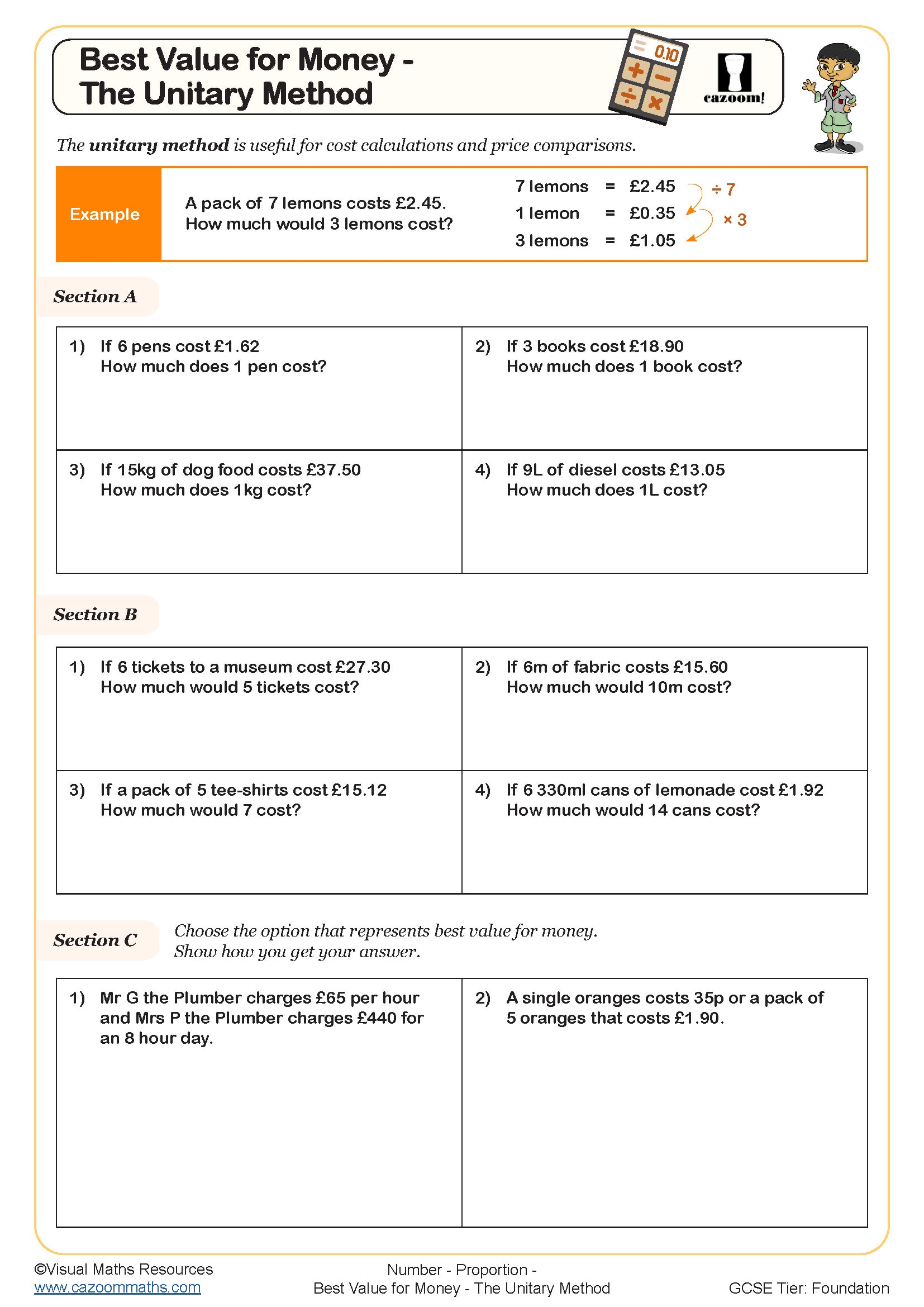
Drawing Conversion Graphs
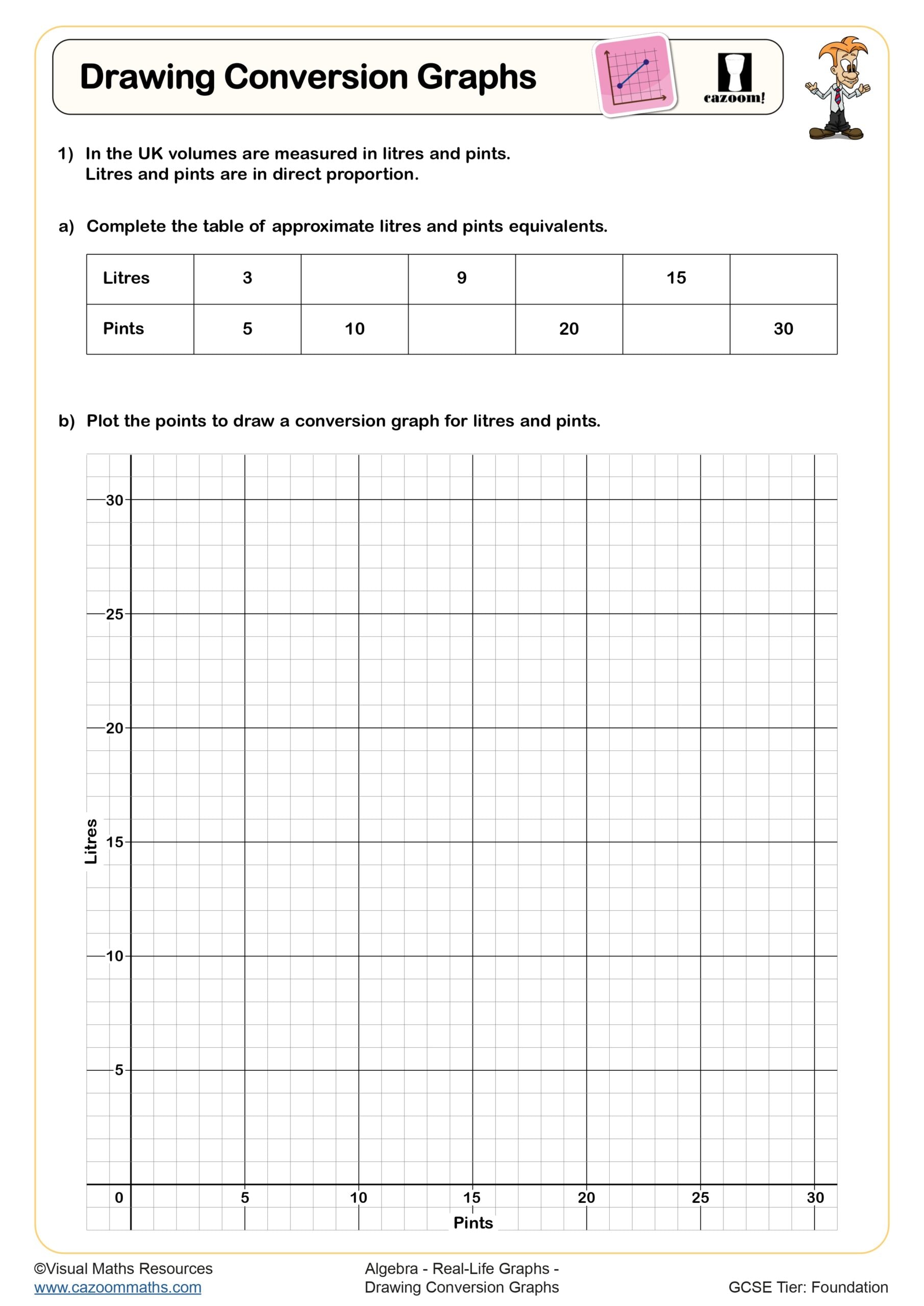
Equations of Proportionality
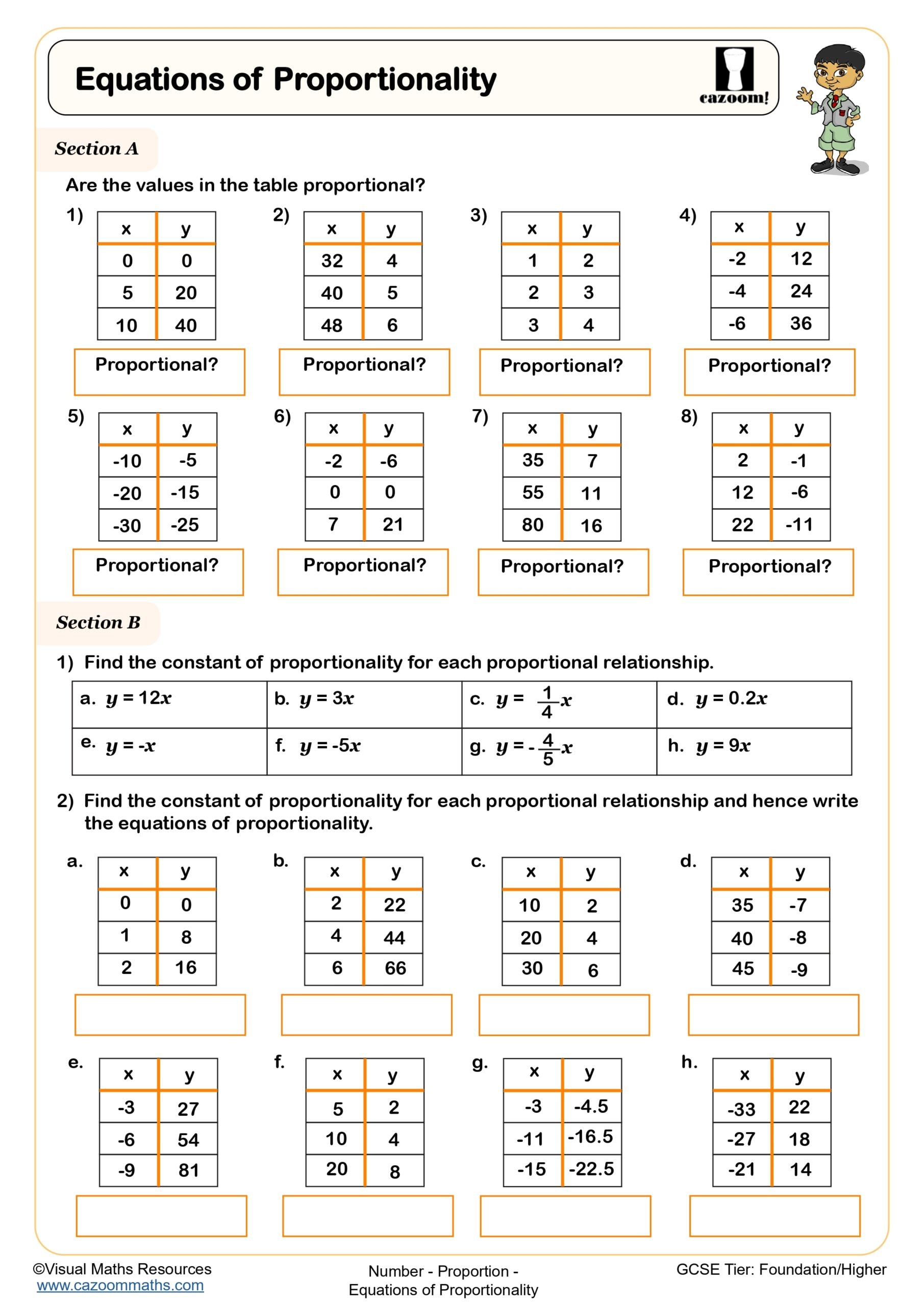
Exchange Rates
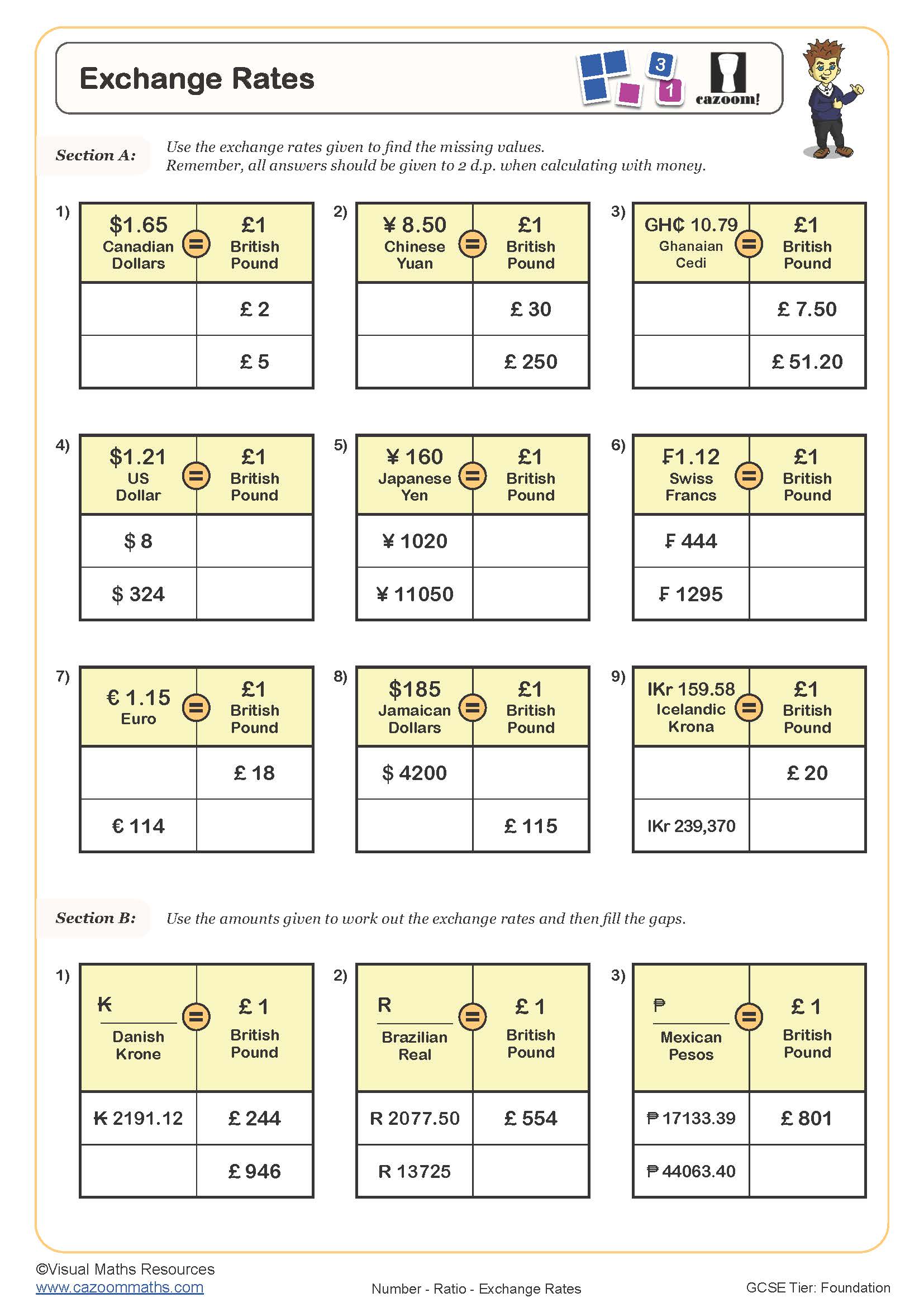
Exploring Direct Proportion Using Stacked Number Lines (A)
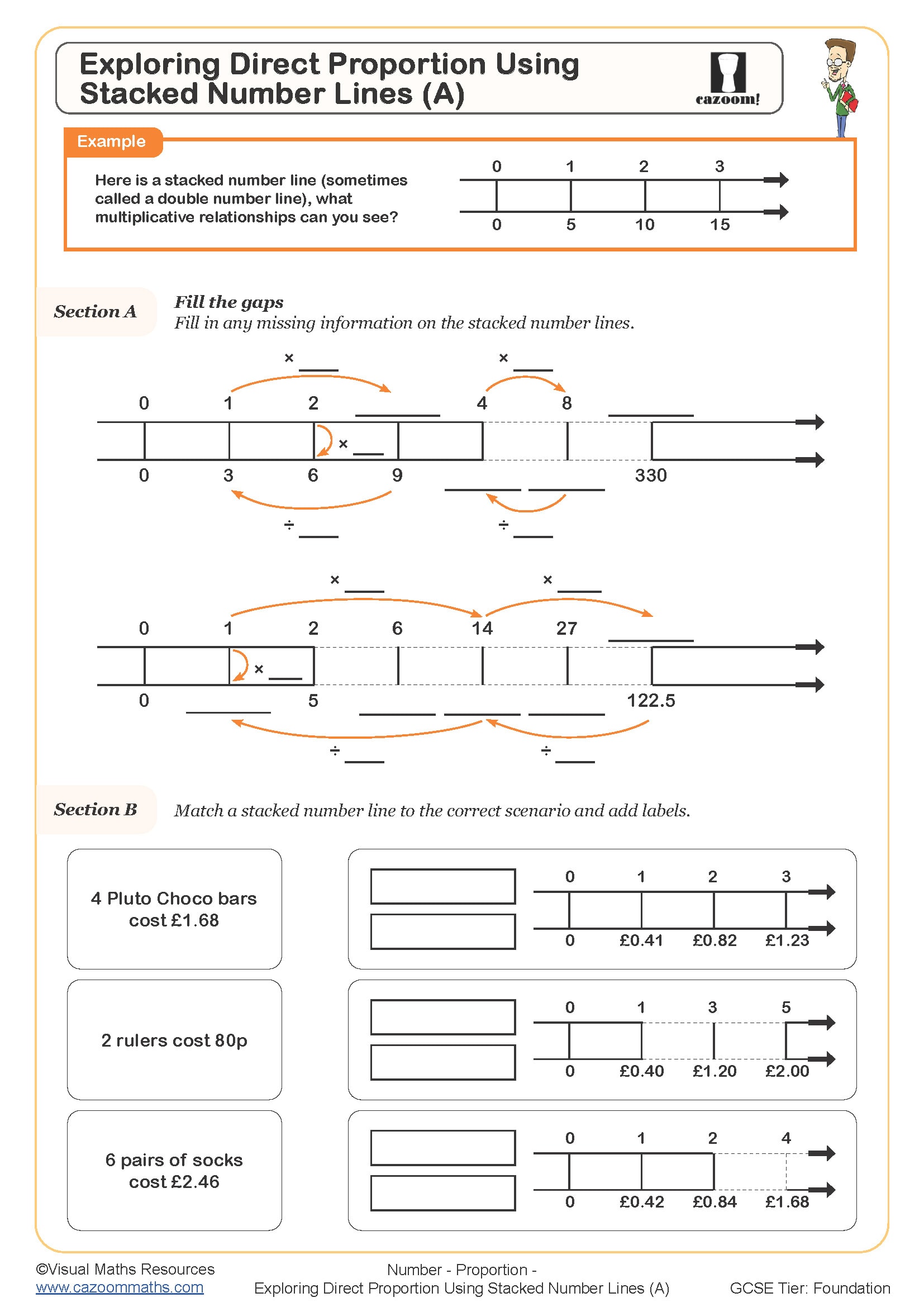
Exploring Direct Proportion Using Stacked Number Lines (B)
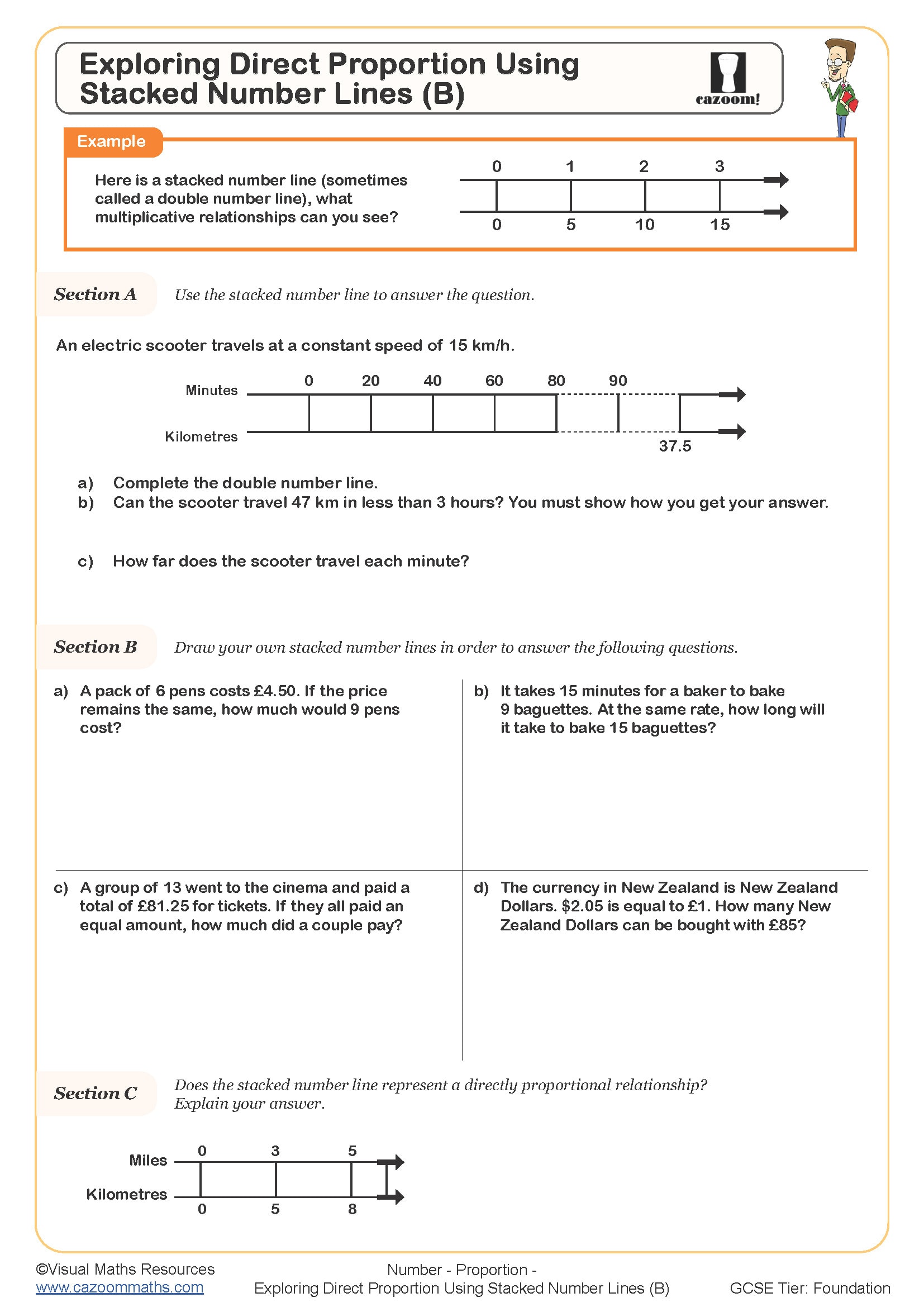
Recipes (A)
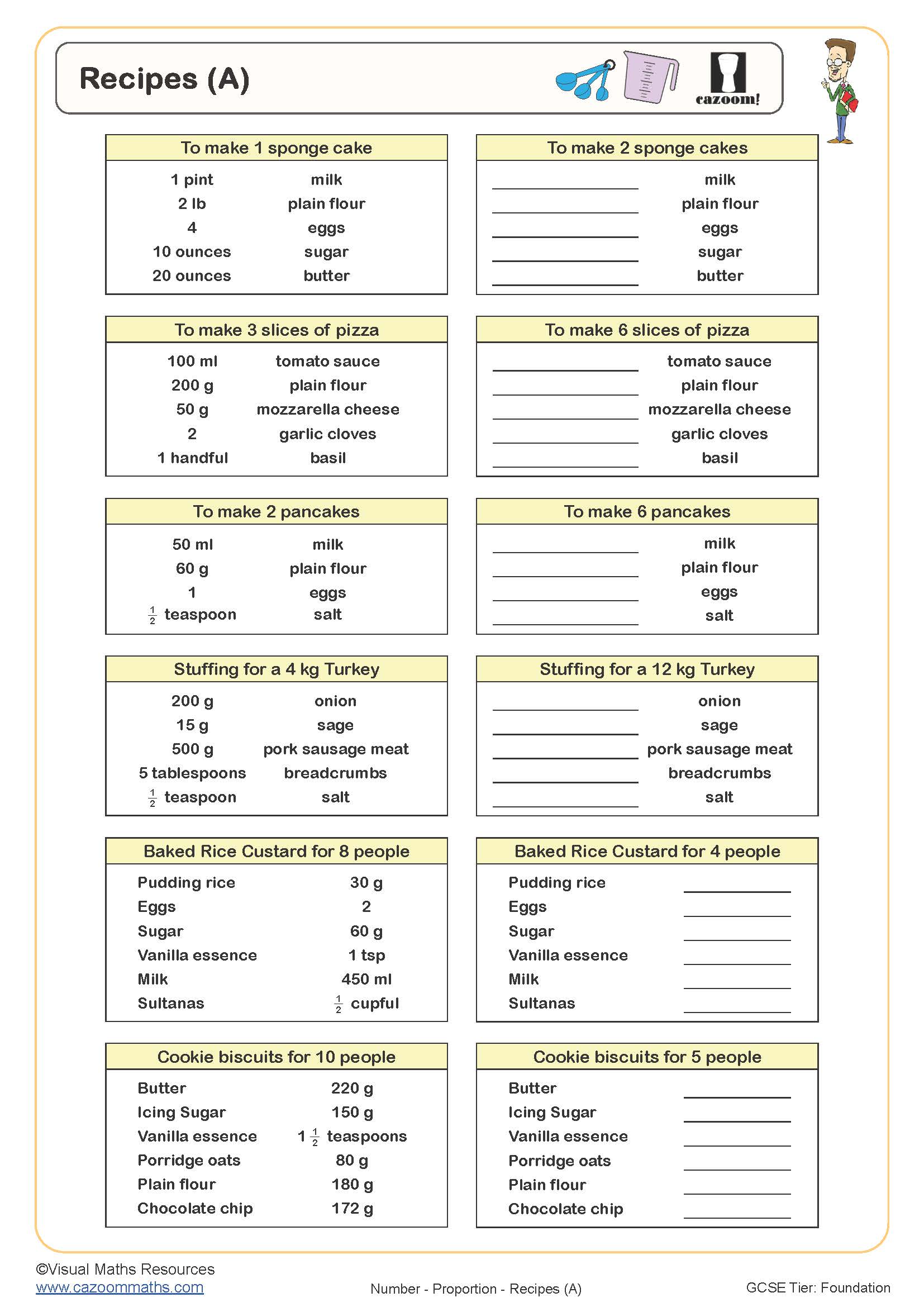
Recipes (B)
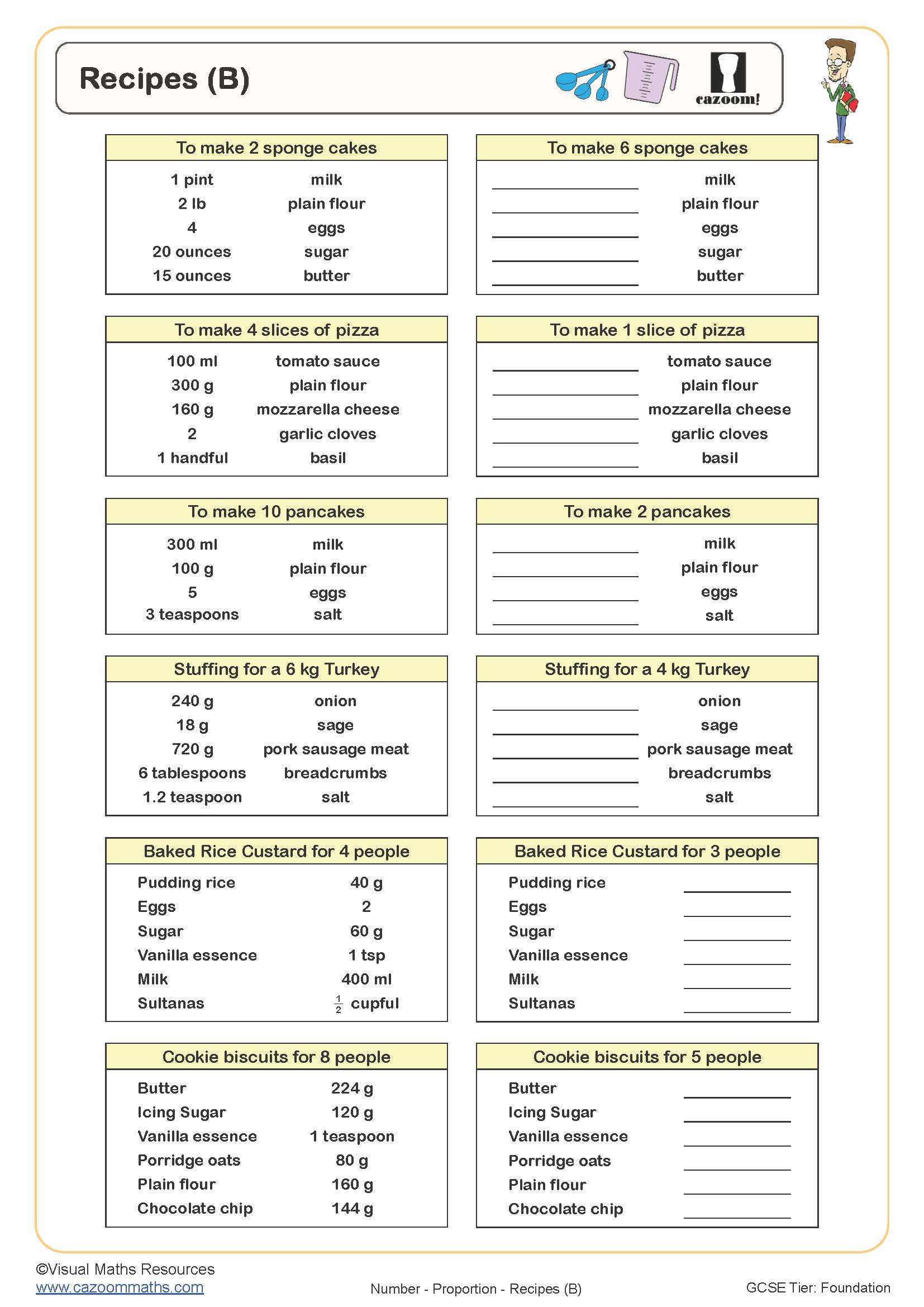
Recipes (C)
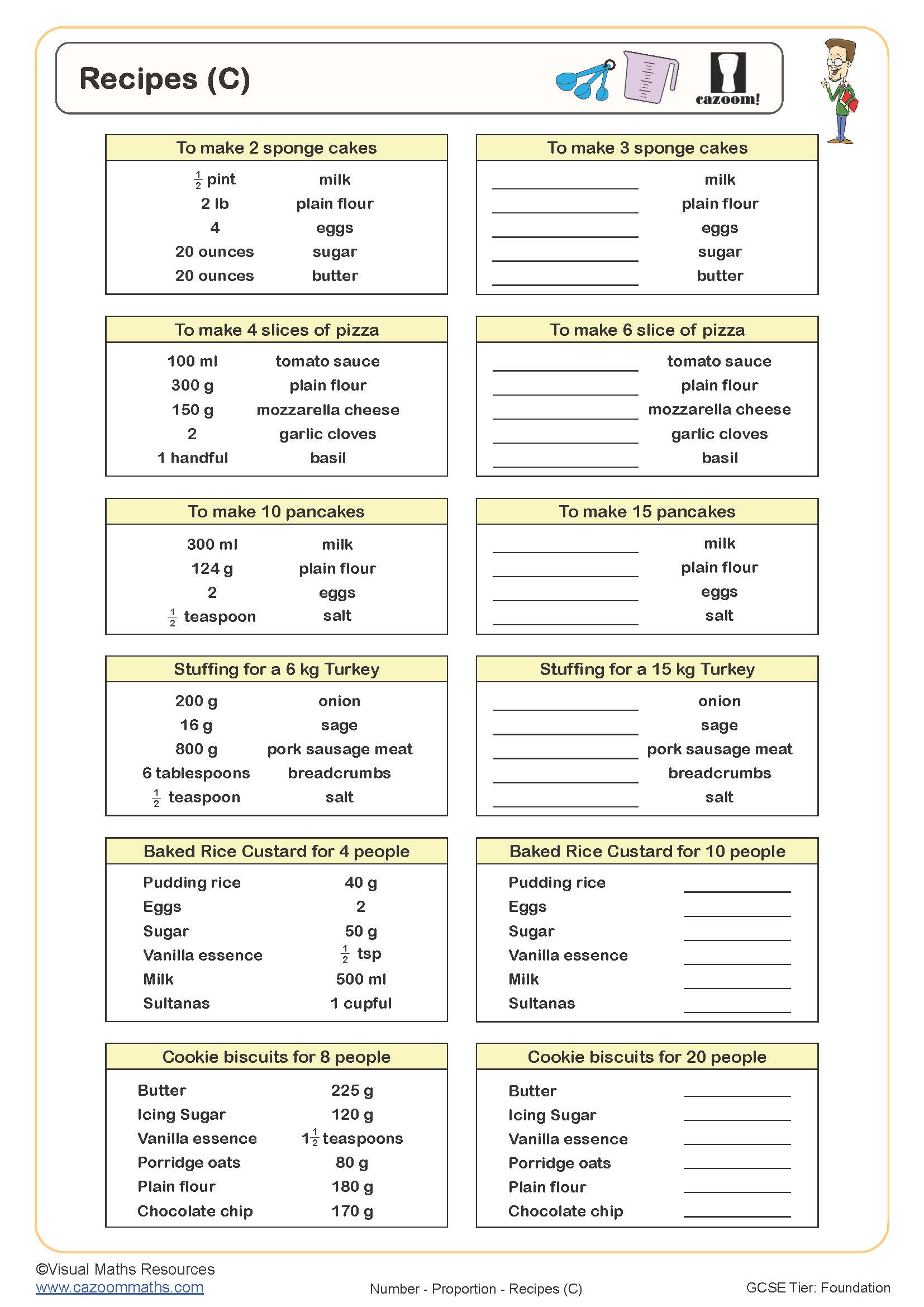
Unit Rates Involving Fractions
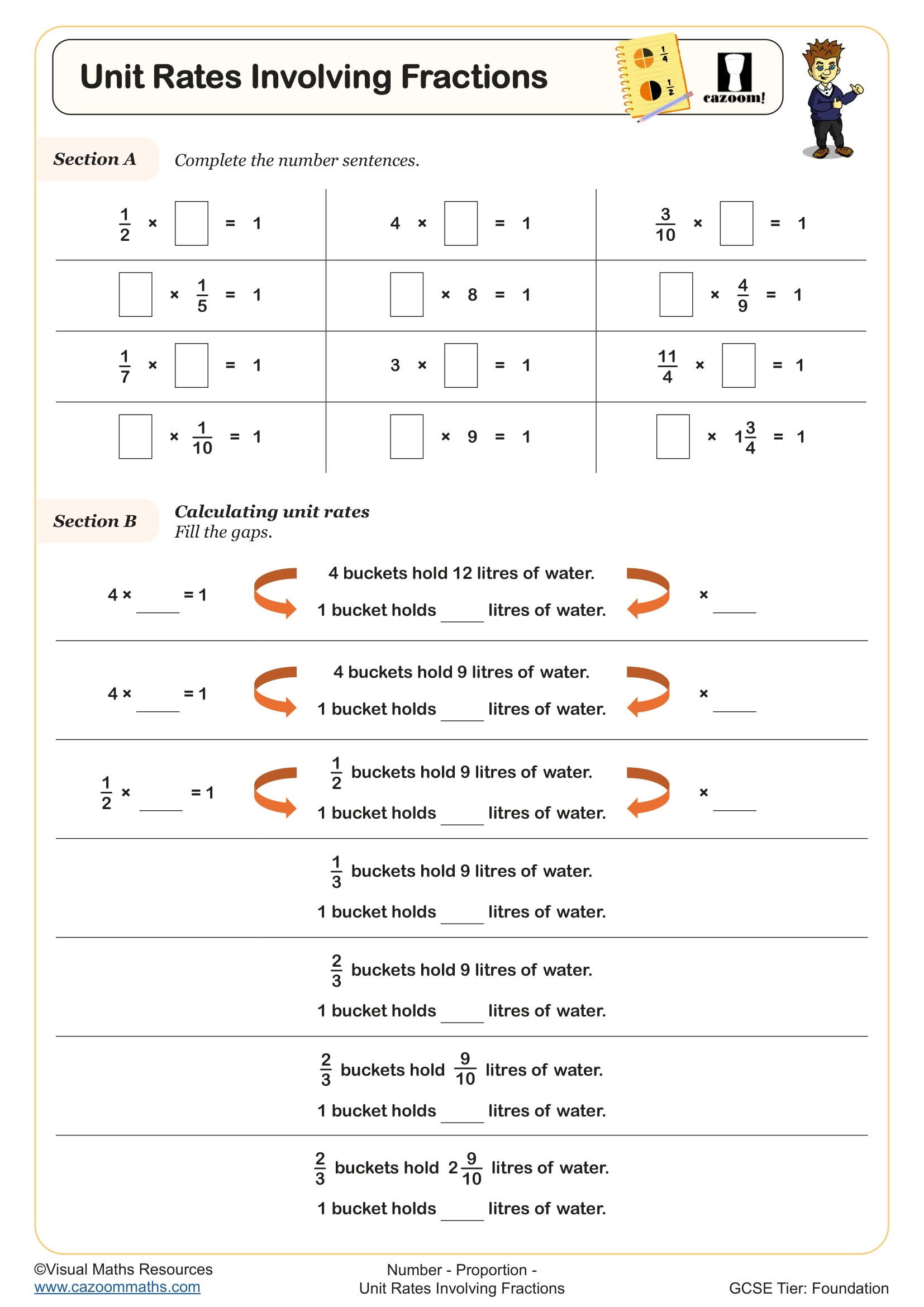
Using Conversion Graphs
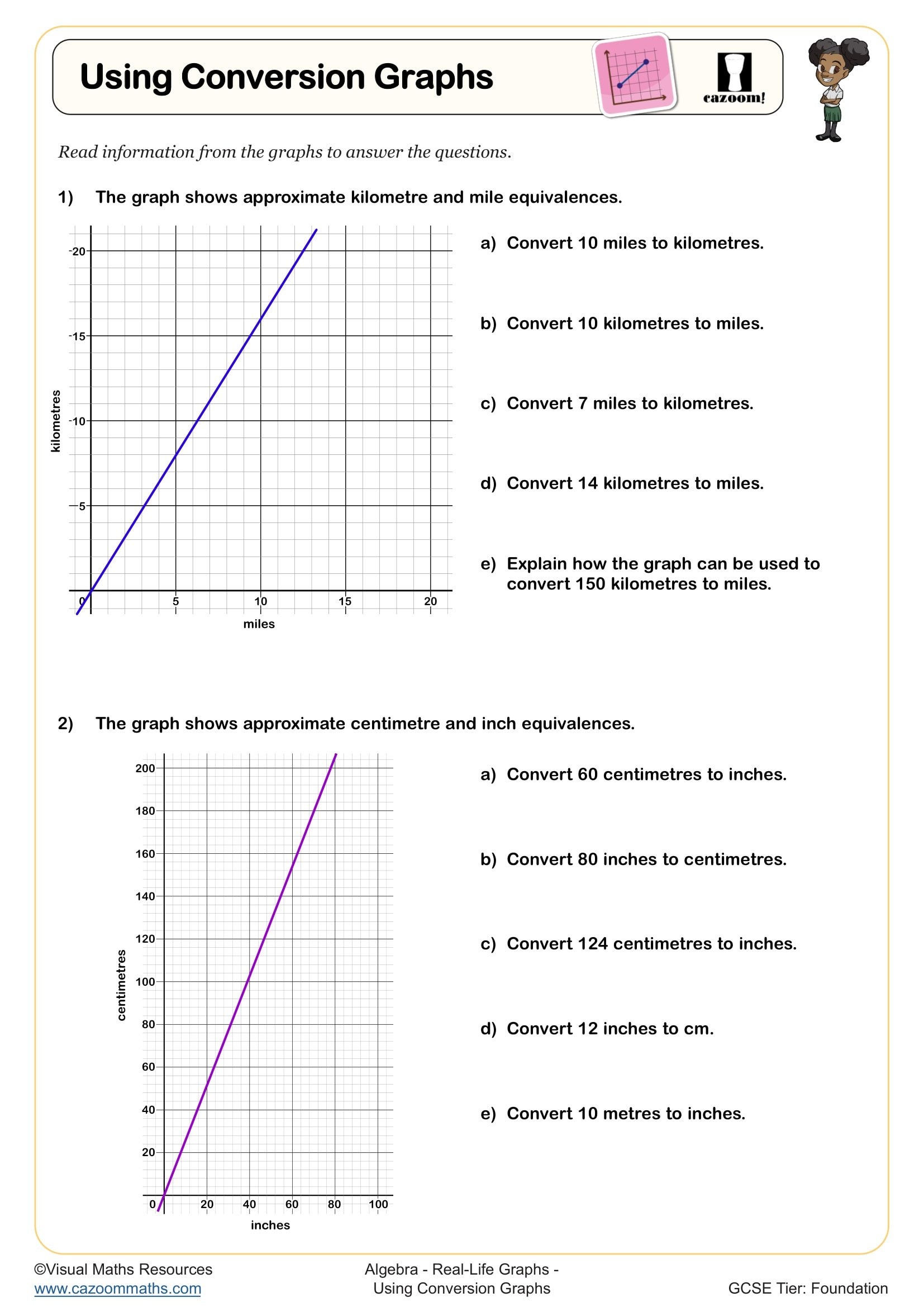
Why Cazoom Maths Ready-to-use Year 8 Proportion Resources are The Best
Proportional reasoning marks a significant leap in mathematical thinking during Year 8, bridging arithmetic understanding with algebraic concepts. Students learn to move past basic ratio calculations to understand how quantities connect and transform together, which leads to GCSE success. Students need to practice multiplicative thinking through different problem types that test their misconceptions. Students who understand proportion as a connecting concept between fractions and percentages and similarity and rates experience a major expansion of their mathematical perspective. The conceptual breakthrough typically occurs simultaneously with improved performance in multiple topic areas, as proportional reasoning is applied in many mathematical applications.
Specific learning benefits include:
• Master direct proportional relationships confidently
• Recognises inverse proportion in context
• Develops algebraic thinking through patterns
• Connects graphs to proportional situations
• Strengthens multiplicative reasoning skills
• Interprets tables of values systematically
• Improves mathematical communication abilities
Curriculum Coverage: Proportion Skills Your Pupils Will Learn
Our comprehensive collection progresses naturally from concrete examples using diagrams and bar models through pictorial representations to abstract algebraic notation. Each worksheet includes worked solutions demonstrating multiple solution methods, helping students understand the reasoning behind each step. Visual scaffolding supports learners at different stages while encouraging independent problem-solving strategies.
The worksheets in this collection include:
• Direct Proportion Introduction — explores constant ratios through practical examples
• Inverse Proportion Basics — discovers relationships where one quantity decreases as another increases
• Graphs of Direct Proportion — plots and interprets straight-line graphs through the origin
• Recipe and Scale Problems — applies proportion to cooking and map calculations
• Exchange Rates and Currency — converts between pounds, euros and dollars systematically
• Unitary Method Practice — finds single unit values before scaling appropriately
• Speed, Distance and Time — relates motion quantities using proportional reasoning
• Best Buy Problems — compares value across different package sizes effectively
• Proportion Word Problems — translates written scenarios into mathematical relationships
• Mixed Proportion Challenges — combines direct and inverse situations requiring careful analysis
Why Parents and Teachers Trust Year 8 Probability Worksheets for Homework Support
Teachers consistently choose these materials for their practical classroom focus and differentiation potential. Clear formatting enables a quick assessment of student understanding, while colour-coded difficulty levels facilitate matching tasks to individual needs. The various practice settings consistently maintain high student engagement during extended practice sessions, particularly when students are learning new material. The step-by-step presentation of worked solutions reveals the problem-solving process, which helps students detect their incorrect solution paths. The questions start with numerical calculations and then move to algebraic formulations, which aligns with the typical learning progression of most students. Extension activities enable advanced students to receive challenging work while providing support to struggling learners, thereby establishing learning environments that accommodate different learning speeds.
Proportion Skills Connect Mathematics to Everyday Life
Understanding proportional relationships opens doors to countless practical applications that students encounter daily.
Students apply these mathematical skills when adjusting recipe quantities for different group sizes, calculating journey times for varying distances, comparing mobile phone contracts and data plans, determining paint needed for decorating projects, working out foreign currency for holidays, scaling drawings and models accurately, analysing sports statistics and performance ratios, and understanding percentage discounts during sales.